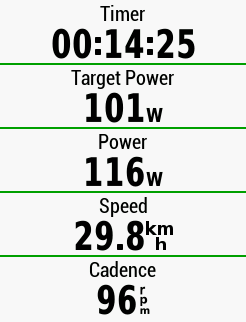An interesting ride today. And no, I don’t mean the workout. That was distinctly not that interesting. So much so that I spent a good part of it watching GCN trying to make the time pass as quickly as possible.
The other reason I took on an easy ride today was because I hurt my knee on Saturday, and so am resting it up as best I can, in a bid to keep riding through it, without putting it under undue stress.
But there was one other thing I was super keen to investigate today.
Without going back into what I covered in the weekly write up, I’ve been puzzling over how Zwift seems to do things differently to all the other riding apps that I’ve tried. At least, the ones that use ERG mode / structured workouts.
The gist of this is that Zwift is able to correctly read the power from my pedals, whereas all the other apps seem to take the power from the turbo trainer. This then totally screws up the workouts as my Tacx NEO appears to be broken at a hardware level. That’s unfix-able, as the unit cannot be calibrated in any way.
So today I was keen to see what is being displayed on the Garmin under the ‘target power’ section. I must confess I have never paid any attention to this figure. It’s hidden away on a screen I don’t use during indoor rides.
Anyway, enough yack, let’s take a look:
And during a rest block:
So it appears what Zwift does that the others don’t, is to take the power reading from the primary input – my pedals in my case – and then adjust the target power on the turbo accordingly, so that even with the discrepancy, the numbers work out.
Very clever.
This answers my biggest questions, and also confirms it’s highly unlikely I can resolve the issues outside of Zwift.
All in then, a really useful exercise. In more ways than one.








